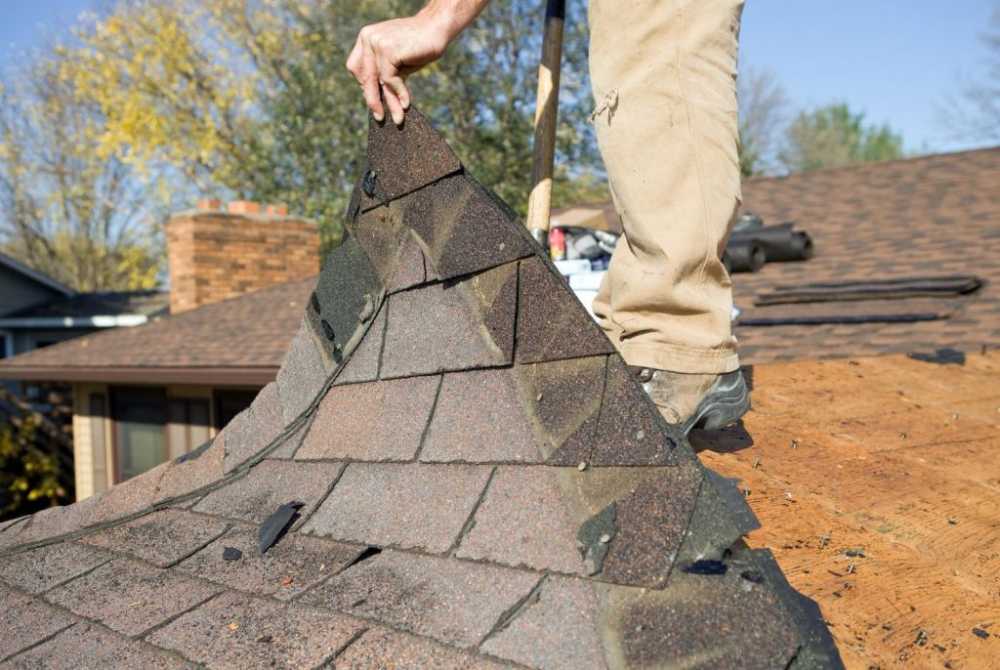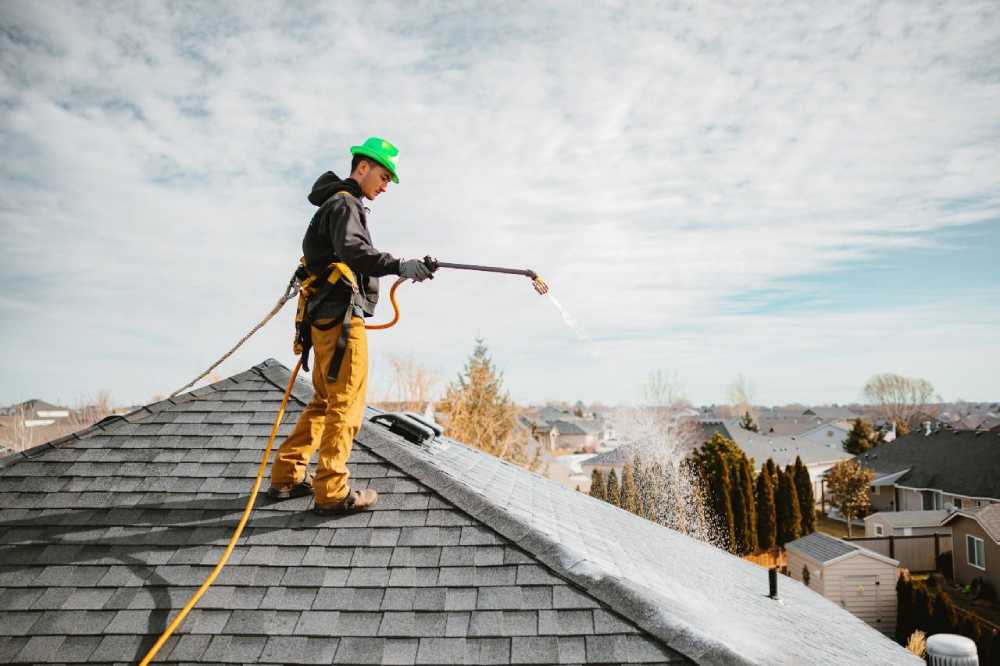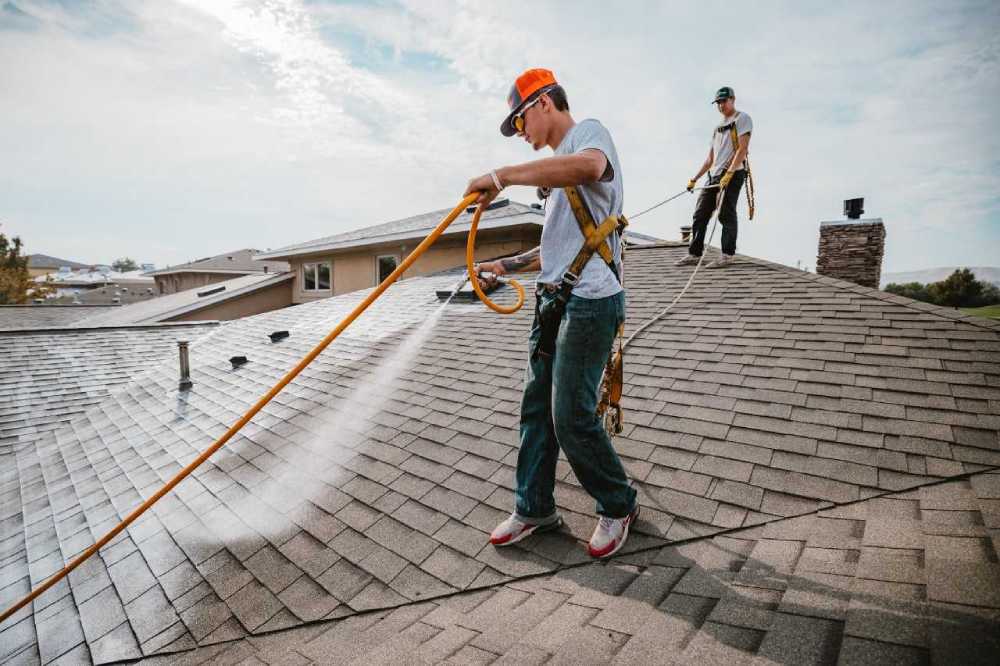Current data reveals that new roof costs homeowners around $15,000 on average. Roof Maxx treatment prices range from $1,500 to $2,000, which is just 20% of a new roof’s cost. These dramatic savings have sparked homeowners’ interest in Roof Maxx reviews as they look for affordable roofing options.
This soybean-based treatment promises to breathe new life into dried-out asphalt shingles. It works by restoring the shingles’ flexibility and waterproofing abilities. Roofing professionals still debate how well it works. Understanding what is Roof Maxx is important before continuing.
Some customers say their shingles stayed flexible for at least eight months after treatment. Others file complaints against Roof Maxx and aren’t sure about the long-term benefits, especially with its five-year warranty. Modern asphalt shingles seem to wear out faster than older ones because manufacturers use lower quality materials. This makes finding affordable ways to preserve roofs more crucial than ever.
My 6-Month Testing Methodology
The team conducted a complete roof inspection to establish the starting conditions for Roof Maxx testing. We looked for signs of aging, granule loss, brittleness, and checked the overall shingle condition.
Original roof condition assessment
Our team documented the roof’s current state with detailed photos and measurements. The inspection team checked critical areas like flashings, vents, and exposed nails to confirm the roof would work well with the treatment. We completed a full evaluation of existing problems, including leaks and damage, before moving forward with the application.
Testing zones and control areas
Our testing approach established specific zones on the roof’s southern and western slopes because these areas face the most important UV exposure and wear. The team monitored surface temperature with an infrared thermometer to keep the required minimum of 55 degrees Fahrenheit.

Measurement criteria and tools used
The testing equipment included:
- Infrared thermometer for surface temperature readings
- Speed square for precise angle measurements
- Hook blade knife for careful shingle manipulation
- Pry bar for controlled shingle lifting
The quickest way to test involved a standardized 45-degree flexibility assessment. This process included:
- Carefully unsealing the bottom edge of test shingles
- Positioning the square against the upper shingle
- Lifting the test shingle to a precise 45-degree angle
- Repeating the lift-and-lower motion three times
- Documenting any cracks or seam development
We incorporated Ohio State University’s testing protocols to ensure scientific validity. These measurements focused on:
- Shingle flexibility improvements
- Granule adhesion levels
- Permeability changes
- Weather resistance capabilities
The team conducted regular assessments to track changes in shingle performance during the testing period. Results revealed approximately 60% improvement in permeability and a 24% decrease in average depression size after treatment.
Cost Analysis of Roof Maxx
Let’s dissect the financial investment needed for Roof Maxx treatment. Homeowners with a typical 2,000-square-foot home should expect to pay between $3,000 and $6,000 for a complete treatment.
Breakdown of installation costs
Your final Roof Maxx cost depends on these key factors:
- Roof size and complexity
- Original roof condition
- Presence of solar panels
- Required preparatory repairs
- Geographic location
Comparison with roof replacement
Traditional roof replacements cost anywhere from $20,000 to $30,000. Roof Maxx offers a budget-friendly alternative. Here’s a complete cost breakdown:
| Service Type | Average Cost | Percentage of Replacement |
|---|---|---|
| Roof Maxx Treatment | $2,000-$2,400 | 15-20% |
| Full Roof Replacement | $12,000 | 100% |
Long-term financial implications
The financial benefits go way beyond the original savings. Each Roof Maxx application adds five years to your roof’s life. You can get up to three treatments over time. This means your roof could last 15 more years at nowhere near the replacement costs.
On top of that, property owners see these extra financial perks:
- Lower energy costs from better shingle performance
- Possible insurance premium reductions
- Better property value retention
The treatment makes financial sense when you realize that all but one of these roofs replaced daily could benefit from this solution. To name just one example, instead of spending $20,000 on replacement, a homeowner might pay just $4,000 for Roof Maxx treatment. These savings can go toward other home improvements.
Keep in mind that while Roof Maxx saves you money, it works as a preservation method rather than a permanent fix. The treatment buys you time before the eventual replacement, so you can better plan your future roofing expenses.
Before and After Results
Lab testing shows compelling evidence about Roof Maxx’s effectiveness on aging shingles. The Ohio State University researched 17-year-old asphalt shingles and provided solid data about how the treatment affects them.
Shingle flexibility measurements
Tests showed that treated shingles expressed remarkable improvements in flexibility. The treatment brought back pliability to levels that match new shingles. This allows them to handle daily expansion and contraction. The improved flexibility points to better durability and wind resistance in treated samples.
Granule loss comparison
The treatment’s effect on granule retention proved substantial:
| Metric | Improvement |
|---|---|
| Granule Displacement | 46% reduction |
| Permeability | 60% improvement |
| Hail Damage | 24% decrease |
Weather resistance testing
The treatment’s effectiveness goes beyond simple flexibility. Lab analysis confirmed that treated shingles showed better weather resistance capabilities. The treatment creates a protective barrier that:
- Improves granule adhesion to nearly-new levels
- Maintains effectiveness in temperatures above 36 degrees Fahrenheit
- Takes approximately 30-60 minutes to fully penetrate the asphalt
The most important finding comes from permeability testing, where treated shingles showed a 60% improvement that brings them closer to new shingle performance levels. The treatment penetrates the asphalt core and restores the shingle’s fundamental properties instead of just coating the surface.
The Ohio State University’s complete analysis verifies that Roof Maxx treatment can reverse the aging process in asphalt shingles. This restoration process works especially well when roofs show early signs of aging but still maintain structural integrity.
Common Complaints and Issues
Roof Maxx treatments have gained popularity in the roofing industry, yet property owners and professionals have raised several concerns. A detailed look at customer feedback shows some recurring problems that need attention.
Installation problems reported
Quality differences are the biggest problem for homeowners. Roof Maxx works with independent contractors across the country, which means service quality varies based on location. Customers have reported these issues:
- Uneven application coverage
- Inadequate pre-treatment cleaning
- Varying contractor expertise levels
- Installation timing and weather conditions
Warranty claim experiences
Roof Maxx provides a five-year warranty, but the fine print shows important limits. The warranty only guarantees that shingles will stay flexible for five years after treatment. Yes, it is worth looking at these warranty details:
| Warranty Coverage | Warranty Exclusions |
|---|---|
| Shingle flexibility | Leak protection |
| Prorated coverage | Storm damage |
| Retreatment option | Installation issues |
Property owners should know that the warranty doesn’t cover leaks or damage from poor installation. Making warranty claims can be tricky because homeowners must prove the product failed to keep shingles flexible.
Insurance company viewpoints
Roof Maxx treatments and insurance coverage create a complex situation. Some insurance providers accept the treatment, while others have doubts. Several insurance-related factors need attention:
Many insurance carriers now use satellite images and drones to check roof conditions. They often cancel policies on older roofs even when these roofs have years of life left. Roof Maxx treatments don’t usually void insurance policies, but some carriers doubt how well they work long-term.
Insurance underwriters point out that the treatment “does not claim to re-seal the bond lines on shingles”. This limit raises questions about wind damage protection since bond line sealing helps prevent storm damage.
The industry remains split on this issue. Some insurance companies see the treatment as good maintenance, while others don’t think it fixes all roofing problems. Property owners who want this treatment should get written confirmation from their insurance carrier about coverage effects.
Scientific Analysis of Effectiveness
Scientists have done lots of research to verify how well Roof Maxx works. Note that The Ohio State University’s detailed study looked at a 17-year-old asphalt roof and showed clear proof of how the treatment works.

Laboratory test results
The Ohio State University’s testing at PRI Materials Testing Labs showed amazing results. The lab analysis focused on five key performance metrics:
- Shingle pliability improvement
- Granule adhesion improvement
- Permeability restoration
- Hail impact resistance
- Fire safety maintenance
The data shows great improvements in all test areas. The treatment made permeability better by 60% and cut down hail impact damage by 24%.
Chemical composition analysis
Scientists have looked closely at Roof Maxx’s chemical makeup beyond performance testing. The formula uses a plant-based, food-grade oil that comes from soybeans as its main ingredient. This new approach, combined with Soy-Fusion Technology, helps millions of microbeads get into brittle asphalt shingles faster.
The treatment’s green credentials stand out:
| Certification | Status |
|---|---|
| USDA Bio-Preferred | Certified |
| EPA Safer Choice | Listed |
| Environmental Impact | Positive |
The treatment gets into shingles within thirty minutes after application, so rain wash-off isn’t much of a worry. The chemical structure lets it sink deep into the asphalt to bring back essential oils lost through aging and exposure.
Long-term durability projections
Lab analysis shows big benefits for roof longevity with Roof Maxx treatment. The scientific data shows one application adds five years to roof life. Using it again every five years can add up to fifteen more years of service life.
The treatment works by bringing back petrochemical oils in shingles that naturally go away over time. This restoration helps treated shingles stay flexible and keep expanding and contracting as weather changes.
The University of Maryland’s research team found these helpful properties while creating solutions for their roof-to-roads program. Their work shows the soy-based formula protects against water getting in and keeps shingles strong without leaving toxic residue.
Roof Maxx Reviews Frequently Asked Questions
Does Roof Maxx actually work?
Yes, Roof Maxx has been reported to work effectively in extending the life of asphalt shingles. According to many Roof Maxx reviews, the treatment can rejuvenate aging shingles, making them more flexible and durable. However, there are also Roof Maxx reviews complaints from some customers who feel the treatment did not meet their expectations, particularly in cases where the roof was already severely damaged.
How much does a Roof Maxx treatment cost?
A Roof Maxx treatment typically costs between $1,500 and $2,500, depending on the size and condition of the roof. This price is significantly less than the cost of a full roof replacement. According to some Roof Maxx reviews consumer reports, the affordability of the treatment is one of its most attractive features.
How long does a Roof Maxx treatment last?
A single Roof Maxx treatment lasts approximately five years. The company recommends reapplication every five years to maintain the rejuvenation effects. Some customers have left Roof Maxx negative reviews, suggesting the treatment did not last as long as expected in certain climates.
Was Roof Maxx on Shark Tank?
Yes, Roof Maxx appeared on an episode of Shark Tank to pitch their innovative roofing solution. While they gained significant exposure from the show, not all feedback has been positive, as evidenced by some Roof Maxx reviews consumer reports complaints.
Does Roof Maxx stop leaks?
Roof Maxx is not designed to stop leaks but rather to extend the life of shingles by restoring their flexibility. If your roof is leaking, repairs should be made before applying Roof Maxx. Some Roof Maxx reviews complaints stem from misunderstandings about its purpose as a rejuvenator rather than a repair product.
What is the Roof Maxx vs Greener Shingles lawsuit?
The Roof Maxx lawsuit involves a legal dispute over alleged patent infringement and business practices. Roof Maxx claims that Greener Shingles improperly used their proprietary technology. The case has been discussed in some Roof Maxx reviews, though details vary depending on the source.
Does Roof Maxx clean the roof?
No, Roof Maxx does not clean the roof. Its purpose is to rejuvenate asphalt shingles by applying a bio-based treatment to restore their flexibility and waterproofing properties. Customers looking for cleaning solutions may need additional services.
How long has Roof Maxx been in business?
Roof Maxx has been in business since 2017. Over the years, the company has gained both positive and negative attention, with Roof Maxx reviews consumer reports highlighting its innovative approach to roof maintenance.
Who are the competitors of Roof Maxx?
Competitors of Roof Maxx include Greener Shingles, SprayShield, and traditional roof replacement companies. While Roof Maxx focuses on rejuvenation, competitors often offer either similar bio-based treatments or alternative roofing solutions.
What can you spray on shingles to make them last longer?
Products like Roof Maxx or other asphalt rejuvenators can be sprayed on shingles to extend their lifespan. These treatments restore essential oils to aging shingles, increasing their flexibility and durability. According to Roof Maxx reviews, this is an effective way to delay the need for a full roof replacement.
